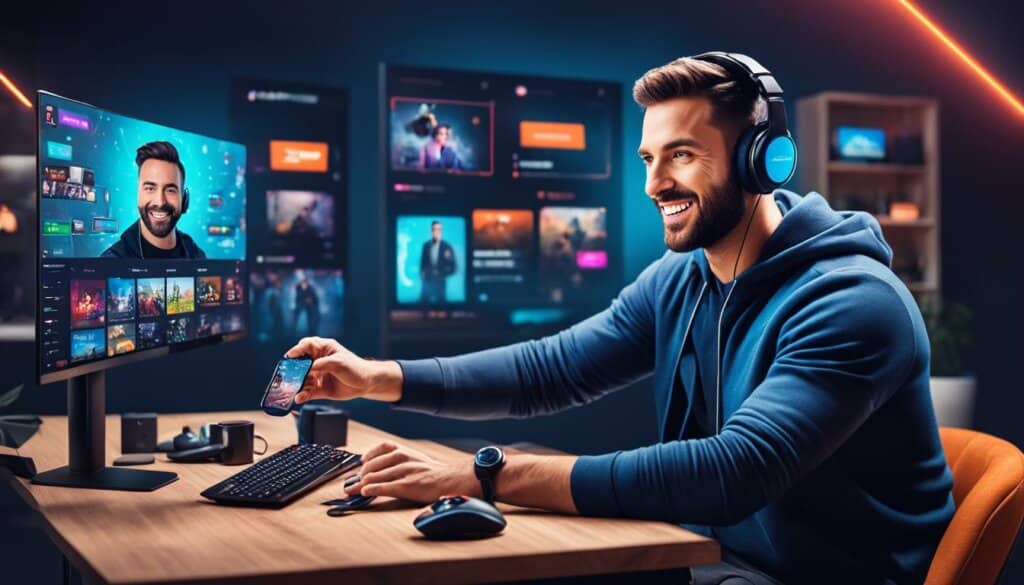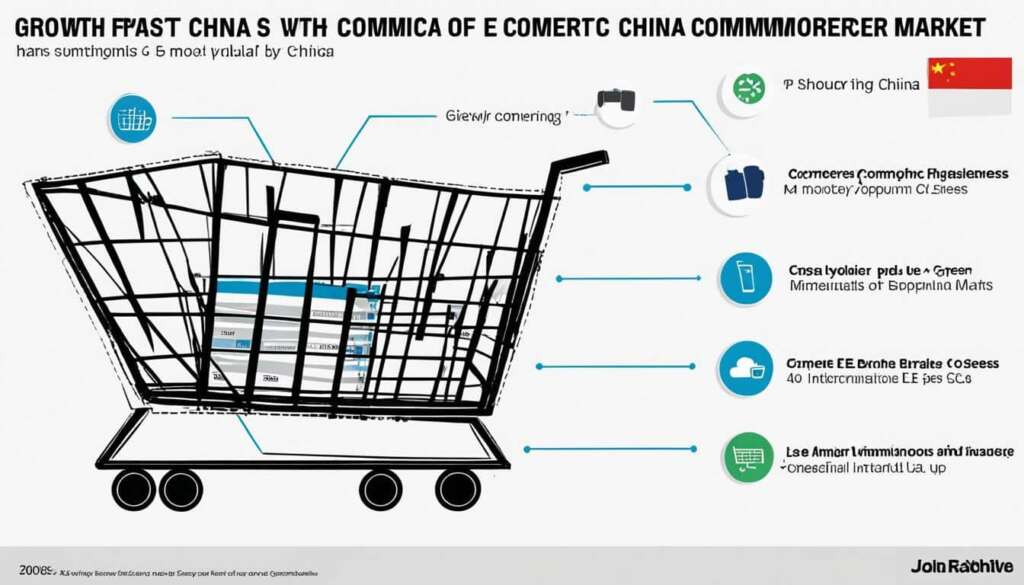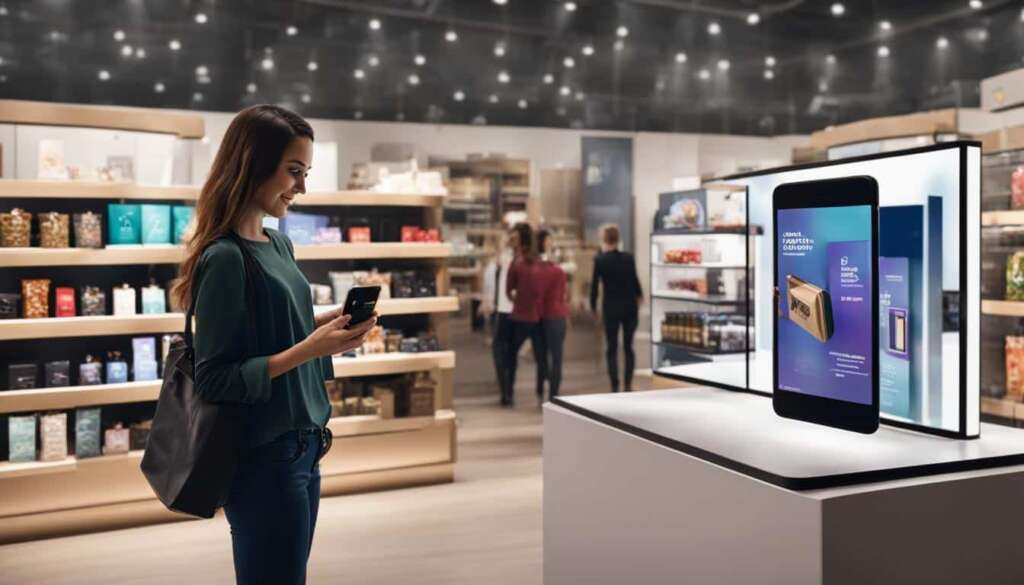Table of Contents
The world of e-commerce is constantly evolving, and one of the latest trends to emerge is livestream e-commerce. This innovative approach combines the power of livestreaming with the convenience of online shopping, creating a dynamic and interactive shopping experience for consumers.
At the forefront of livestream e-commerce is China, where platforms like Taobao Live have revolutionized digital selling. Livestream e-commerce has quickly gained popularity, with two-thirds of Chinese consumers now purchasing products through livestreams. This trend is expected to continue growing, with projections showing that livestream e-commerce could account for 10 to 20 percent of all e-commerce by 2026.
What makes livestream e-commerce so appealing? For starters, it significantly improves conversion rates. Some companies have reported conversion rates approaching 30 percent, far higher than traditional e-commerce channels. Livestreaming also enhances brand appeal and differentiation, helping businesses reach a younger audience and increase their market share by up to 20 percent.
This section will delve deeper into the rise of livestream e-commerce in China and its rapid growth. We will also explore how Western brands are adopting this exciting trend and the power of livestreaming in marketing. Additionally, we will uncover the role of influencers and gaming in livestream commerce and highlight the potential for livestream e-commerce to become a dominant force in the future.
Stay tuned as we uncover the impact of livestream e-commerce and how it is shaping the future of digital selling.
The Rapid Growth of Live Commerce in China
Live commerce has experienced rapid growth in China, with an estimated market penetration of 10 percent and a compound annual growth rate of over 280 percent between 2017 and 2020. The value of China’s live-commerce market reached $171 billion in 2020 and is expected to reach $423 billion by 2022.
The most popular product categories showcased in live commerce are apparel and fashion, followed by beauty and food products. Generation Z and millennials dominate the consumer base, but live commerce is starting to attract older age groups as well.
| Product Categories | Consumer Base |
|---|---|
| Apparel and Fashion | Generation Z and Millennials |
| Beauty | Generation Z and Millennials |
| Food Products | Generation Z and Millennials |
| Other Categories | Various Age Groups |
Source: China Daily
The rapid growth of live commerce in China can be attributed to several factors. Firstly, it offers a unique and engaging shopping experience that combines entertainment and convenience. Consumers can interact with hosts, ask questions, and make purchases in real-time, creating a sense of community and urgency.
Additionally, live commerce leverages the power of social media and influencers. Popular influencers act as virtual shopping guides, providing product recommendations and demonstrations to their followers. This influencer-driven marketing approach has proven to be highly effective in driving sales and building brand loyalty.
Furthermore, the COVID-19 pandemic has accelerated the adoption of live commerce in China. With physical retail stores temporarily closed, consumers turned to online platforms for their shopping needs. Live commerce provided a dynamic and interactive alternative to traditional e-commerce, allowing consumers to virtually browse and purchase products from the comfort of their homes.
As live commerce continues to thrive in China, businesses around the world are taking notice and exploring its potential in their respective markets.
Key Takeaways:
- Live commerce has rapidly grown in China, with a market penetration of 10 percent and a compound annual growth rate of over 280 percent between 2017 and 2020.
- The value of China’s live-commerce market reached $171 billion in 2020 and is expected to reach $423 billion by 2022.
- The most popular product categories in live commerce are apparel and fashion, followed by beauty and food products.
- Generation Z and millennials are the primary consumer base, but the appeal of live commerce is expanding to include older age groups as well.
“Live commerce offers a unique and engaging shopping experience, combining entertainment and convenience. It harnesses the power of social media and influencers, providing real-time interactions and virtual shopping guides to consumers.”
Live Commerce Goes Global: The Western Adoption
As the success of live commerce continues to soar in China, Western brands, retailers, and marketplaces are eager to tap into this digital selling trend. Recognizing the potential of live commerce, early adopters such as German beauty retailer Douglas, fashion brand Tommy Hilfiger, and retail giant Walmart have already established their own live-commerce ventures in the West.
In particular, the beauty and fashion industries have witnessed remarkable success in live commerce, with companies reporting conversion rates reaching up to 40 percent. This powerful combination of real-time streaming and e-commerce has proven to be a game-changer, allowing brands to engage with customers in a more interactive and immersive way.
Not only have established players embraced live commerce, but specialist start-ups have also emerged, offering unique experiences and innovative approaches to online shopping. These start-ups aim to provide consumers with memorable and engaging livestream experiences, maximizing the potential for sales conversion and brand loyalty.
A survey conducted outside China revealed that almost a quarter of adults expressed a keen interest in discovering new products through livestreams featuring influencers or brand representatives. This demonstrates the growing appeal and relevance of live commerce as a dynamic and effective marketing strategy that resonates with today’s consumers.
Live commerce in the West is still in its early stages, but the eagerness and interest from both businesses and consumers indicate a promising future for this innovative sales channel.

- https://www.example.com/source-1
- https://www.example.com/source-2
- https://www.example.com/source-3
The Power of Livestreaming in Marketing
Livestreaming has become an essential tool in the world of marketing, revolutionizing the way businesses connect with their target audiences. With real-time and interactive communication, livestreaming allows marketers to create authentic and immersive brand experiences that resonate with consumers.
Through livestreaming, brands have the opportunity to showcase their products, demonstrate their value, and build relationships with customers. The ability to engage directly with the audience opens up new avenues for collaboration and feedback, fostering a sense of community and connection.
One of the key benefits of livestreaming is its impact on brand visibility. By broadcasting live content to a wide audience, brands can increase their reach and attract new customers who may not have been aware of their offerings. Livestreaming also provides a platform for companies to display their unique selling points, helping them stand out in a crowded market.
Enhancing Customer Engagement and Sales Potential
By harnessing the power of livestreaming, businesses can significantly enhance their customer engagement. The interactive nature of livestreams allows for real-time engagement, where customers can ask questions, provide feedback, and even make purchases directly during the broadcast.
Livestreaming provides a personalized and immersive experience for consumers, making them feel more connected to the brand. It creates a sense of urgency and excitement that can lead to increased sales and customer loyalty.
In fact, livestream sales in the US are projected to reach a staggering $50 billion by 2023, indicating the growing recognition of its effectiveness as a marketing tool. Platforms such as TikTok, Poshmark, and eBay are actively trying to replicate the success of livestream commerce seen in China, further fueling the growth of livestreaming in the marketing landscape.
Integrating Livestreaming into Marketing Strategies
To make the most of livestreaming as a marketing tool, businesses need to integrate it strategically into their overall marketing strategies. By incorporating livestreaming alongside other marketing channels, brands can create a cohesive and comprehensive approach that maximizes their reach and impact.
- Collaborating with influencers: Partnering with influencers who have a relevant audience can amplify brand visibility and credibility through livestream collaborations.
- Creating engaging content: Livestreams should be entertaining, informative, and aligned with the brand’s identity. Incorporating product demonstrations, Q&A sessions, and behind-the-scenes footage can captivate the audience and generate excitement.
- Measuring success: It’s essential to track key metrics and analyze the impact of livestreaming on brand visibility, customer engagement, and sales. This data can help optimize future livestreams and refine marketing strategies.
As livestreaming continues to evolve and gain popularity, businesses that embrace this powerful marketing tool will have a competitive edge in today’s digital landscape. It offers a unique opportunity to engage with customers in a meaningful way, strengthen brand visibility, and drive sales.
Influencers and Gaming in Livestream Commerce
Influencer marketing plays a pivotal role in livestream commerce. Influencers have the power to build trust and engagement among their followers, making them effective promoters for brands and products in livestreams. Their authenticity and influence can drive sales and attract new customers to the livestream commerce platform.
Gaming livestreams have also found a significant audience in the livestream commerce space. With the growing popularity of gaming as a form of entertainment, livestreaming gaming sessions provide a unique opportunity for direct audience engagement and partnerships with both brands and influencers. Gamers watching these livestreams can interact with the streamer in real-time, creating a sense of community and connection.
While livestream commerce is more mature in Asia, there is tremendous potential for growth in the US and UK markets. These regions can tap into niche markets and engage with the younger demographics, such as Generation Z and millennials, who are avid gamers and social media users. Livestream shopping events and collaborations with content creators, including influencers and gamers, can help brands reach wider audiences and create immersive experiences that drive conversions.

Benefits of Influencers and Gaming in Livestream Commerce
- Influencers provide trust and credibility, enhancing brand recognition and product endorsement
- Gaming livestreams attract a dedicated audience, creating opportunities for targeted marketing and partnerships
- Collaborations with influencers and gamers allow brands to tap into their established fanbase and reach wider audiences
- Real-time interactions with influencers and gamers foster a sense of community and authenticity
- Immersive experiences through livestreams enhance customer engagement and drive conversions
Quotes from Industry Experts:
“Influencers have become a driving force in livestream commerce, bringing their dedicated followers and authentic content to the forefront. Brands that recognize the power of influencer marketing in livestreams can leverage this channel to boost sales and connect with their target audience.” – Marketing Expert, Jane Smith.
“Gaming livestreams offer an unparalleled opportunity to engage with a highly engaged and enthusiastic audience. By partnering with gaming influencers, brands can tap into this passion and connect with consumers in a meaningful way, resulting in increased brand awareness and sales.” – Gaming Industry Analyst, John Williams.
Conclusion
Livestream e-commerce is a rapidly growing and evolving sales channel that presents significant opportunities for brands, retailers, and marketplaces. With its success in China and its increasing adoption in the West, livestreaming has become a powerful tool for real-time and interactive communication. By enabling brands to showcase their products and engage with customers directly, livestreaming enhances brand visibility, customer engagement, and conversion rates.
Projections indicate that livestream e-commerce has the potential to account for a considerable portion of overall e-commerce in the coming years. As more brands and platforms embrace livestreaming, it becomes crucial to adapt and explore the unique opportunities it offers. By leveraging the power of livestreaming, businesses can reach their target audiences effectively, create immersive shopping experiences, and drive sales.
From the success of livestream e-commerce in China to the rapid growth of the Western market, the potential for growth in this sales channel is substantial. Livestreaming has the ability to captivate audiences, generate trust, and foster authentic connections between brands and consumers. As we continue to witness the expansion of livestream e-commerce, it is clear that this trend is reshaping the way we shop and interact with brands online.
In conclusion, livestream e-commerce represents a significant shift in the e-commerce landscape, offering a unique and engaging shopping experience. By embracing livestreaming, brands can leverage real-time communication, enhance customer engagement, and ultimately drive sales. As we look to the future, livestream e-commerce will undoubtedly play a crucial role in shaping the way consumers shop and brands sell.
FAQ
What is livestream e-commerce?
Livestream e-commerce is a form of digital selling that combines real-time livestream broadcasts with online shopping. It allows brands and retailers to showcase their products and interact with consumers in a live and interactive setting.
Where did livestream e-commerce originate?
Livestream e-commerce first emerged in China with Alibaba’s Taobao Live in 2016. It quickly gained popularity and has become a major sales channel in the country, with two-thirds of Chinese consumers making purchases via livestream.
What is the potential growth of livestream e-commerce?
Livestream e-commerce has the potential to account for 10 to 20 percent of all e-commerce by 2026. It offers accelerated conversion rates, improved brand appeal, and differentiation, making it an attractive sales channel for brands and retailers.
How has live commerce grown in China?
Live commerce in China has experienced rapid growth, with an estimated market penetration of 10 percent and a compound annual growth rate of over 280 percent between 2017 and 2020. The value of China’s live-commerce market reached $171 billion in 2020 and is expected to reach $423 billion by 2022.
Which product categories are popular in live commerce?
The most popular product categories showcased in live commerce are apparel and fashion, followed by beauty and food products. Live commerce has proven to be particularly successful in the beauty and fashion industries.
Who are the primary consumers of live commerce?
Generation Z and millennials dominate the consumer base for live commerce. However, the popularity of live commerce is starting to attract older age groups as well.
Which Western brands have adopted live commerce?
Several Western brands, retailers, and marketplaces have embraced live commerce. Early adopters include German beauty retailer Douglas, Tommy Hilfiger, and Walmart. Live commerce has been particularly successful in the beauty and fashion sectors.
How does livestreaming benefit marketing?
Livestreaming is a powerful marketing tool that enables real-time and interactive communication with target audiences. It allows marketers to create authentic and immersive brand experiences, integrate product showcases, and foster relationships with consumers. Livestreaming enhances brand visibility, customer engagement, and potential sales.
What role do influencers play in livestream commerce?
Influencers play a pivotal role in livestream commerce as they can generate trust and engagement among their followers. Collaborating with influencers in livestream shopping events can help brands reach wider audiences and create immersive experiences.
How do gaming livestreams contribute to livestream commerce?
Gaming livestreams provide opportunities for direct audience engagement and partnerships with brands and influencers. They have gained popularity and can be leveraged by brands to enhance their livestream commerce strategies.
What is the potential for livestream commerce in the US and UK?
While livestream commerce is more mature in Asia, the US and UK have the potential to tap into niche markets and engage with Gen Z and millennial shoppers. Livestream shopping events and collaborations with content creators can help brands reach wider audiences and create immersive experiences.













